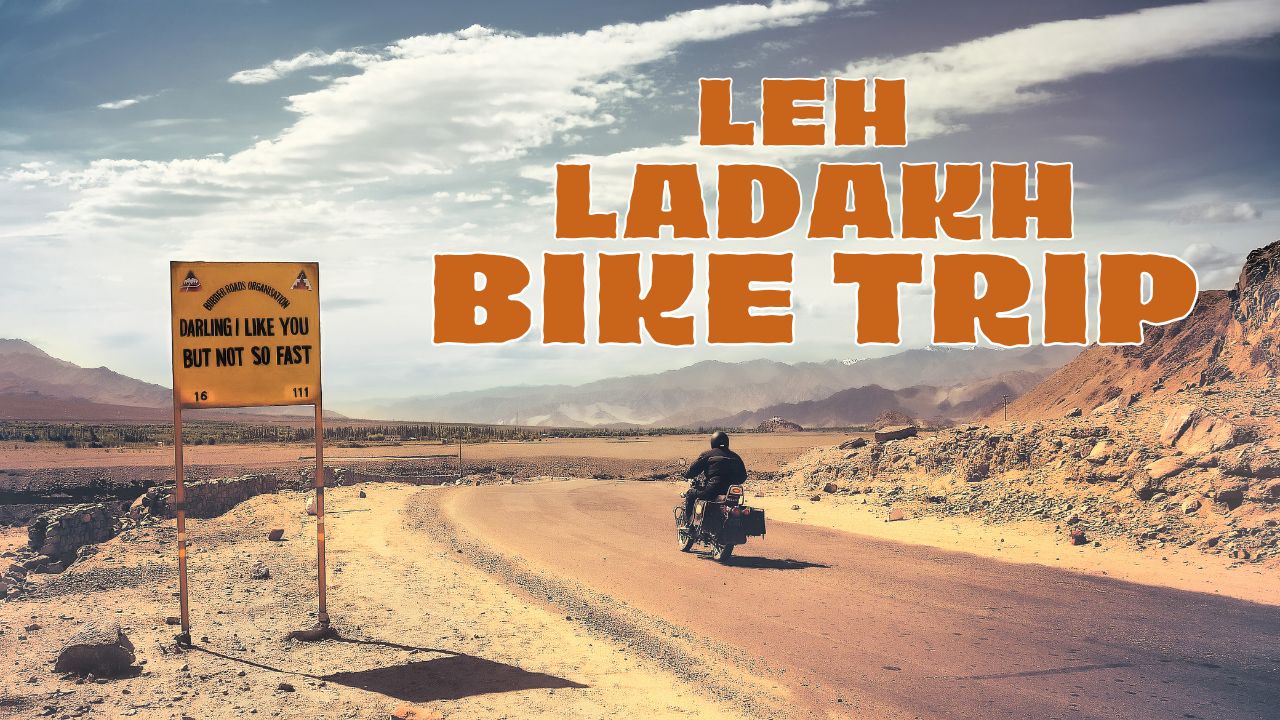Can You Rely on Weather Forecasts for Your Bike Trip to Ladakh?
Planning a bike trip to Ladakh is an exciting and adventurous experience that requires careful preparation. One of the biggest concerns for...

Planning a bike trip to Ladakh is an exciting and adventurous experience that requires careful preparation. One of the biggest concerns for any rider is the weather conditions, especially when traversing the high-altitude terrains of Leh and Ladakh. Riders often check multiple weather apps and forecasts before setting out, but the question remains — can you truly trust weather forecasts when planning your Leh bike rides?
At Cazel Group, we understand the unpredictable nature of Ladakh’s weather. Our specialized bike trip to Ladakh packages are designed keeping in mind the unique climatic challenges of the region. Let’s dive deeper into how much you can rely on forecasts and how you should prepare for your bike adventure.
Understanding Ladakh’s Unpredictable Weather
Ladakh’s weather is heavily influenced by its geography. Situated at an altitude of over 3,000 meters, the region experiences sudden weather changes that cannot always be predicted accurately. A clear sunny morning can quickly turn into an afternoon of strong winds, dust storms, or even snow at high passes like Khardung La or Chang La. Due to such rapid shifts, weather forecasts often struggle to deliver completely accurate predictions for this region.
When planning a bike trip to Ladakh, riders must be aware that even the most trusted apps and weather channels may only offer a general outlook rather than precise, hour-by-hour updates. This is why depending solely on forecasts is not advisable for Leh bike rides.
Why Weather Forecasts for Ladakh Are Often Inaccurate
There are several reasons why weather forecasts for Ladakh can be unreliable:
- Sparse Weather Stations: The limited number of weather stations across Ladakh affects the accuracy of localized forecasting.
- High-Altitude Dynamics: Weather changes rapidly at high altitudes, where conditions can shift in a matter of minutes.
- Remote Locations: Many parts of the Leh region, including remote passes and valleys, are not regularly monitored for real-time weather.
- Seasonal Variations: During the summer months (June to September), sudden rainfall or snowfall in higher altitudes can disrupt travel plans without much prior warning.
Considering these factors, riders on a bike trip to Ladakh must not completely rely on technology for weather updates. Instead, they should be prepared for a wide range of possibilities.
How Cazel Group Ensures a Safe Bike Trip to Ladakh
At Cazel Group, we take every precaution to ensure that your bike trip to Ladakh is safe and enjoyable. We have experienced tour leaders who have firsthand knowledge of the region’s climate patterns. Instead of relying solely on forecasts, our team stays connected with local authorities and spotters stationed at strategic locations. This ensures that our riders receive the most updated and practical information while on the road.
We also prepare our riders with essential safety gear, contingency plans, and buffer days to account for any weather-related delays. Our customized packages focus on offering the best possible experience while adapting to changing conditions.
If you book your bike trip to Ladakh through Cazel Group, you will not just follow a fixed itinerary blindly. You’ll have the flexibility and expert support needed to navigate the uncertainties of Ladakh’s weather.
Essential Tips to Prepare for Unpredictable Weather
Even if forecasts offer a promising picture, it is important to take personal measures to prepare for all possible scenarios:
- Layered Clothing: Pack multiple layers so you can adapt to both cold and warm weather within a day.
- Waterproof Gear: Carry high-quality waterproof jackets, gloves, and boots. Unexpected rain can make riding uncomfortable and dangerous.
- Flexible Planning: Allow extra days in your travel plan. Bad weather might block a pass or delay a part of your journey.
- Emergency Contacts: Always have a way to communicate with local services in case of roadblocks or other emergencies.
- Local Knowledge: Listen to local advice. Sometimes, villagers or locals know about a storm or landslide well before any app does.
Following these tips can make a huge difference in how well you handle Ladakh’s changing climate during your bike trip.
Best Time for a Weather-Safe Bike Trip to Ladakh
Although no time is completely free from surprises, the best months for a bike trip to Ladakh are generally from June to early September. During these months, most of the high passes are open, and the chances of heavy snowfall are relatively low. However, rain in some regions like the Manali-Leh highway can still pose challenges.
By choosing a professional and experienced tour company like Cazel Group, you can make sure that you get expert advice about the safest windows for travel, the best routes, and real-time weather updates based on ground conditions.
Conclusion: Trust Preparation Over Predictions
In conclusion, while weather forecasts are a useful tool, they should never be your only guide when planning a bike trip to Ladakh. The region’s rugged landscape and unpredictable climate demand a flexible and well-prepared approach.
Choosing a trusted travel partner like Cazel Group ensures that you have expert support, contingency planning, and an experienced team by your side. With the right preparation, you can experience the majestic beauty of Ladakh while staying safe and enjoying every thrilling moment on your bike.
Are you ready to embrace the adventure that awaits in Ladakh? Start your unforgettable journey with Cazel Group and ride into the heart of the Himalayas, no matter what the skies have planned.





